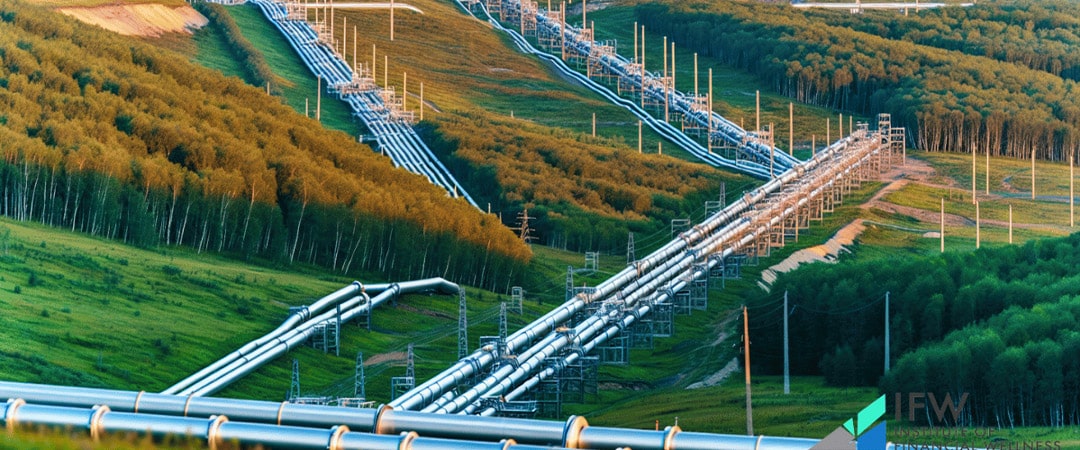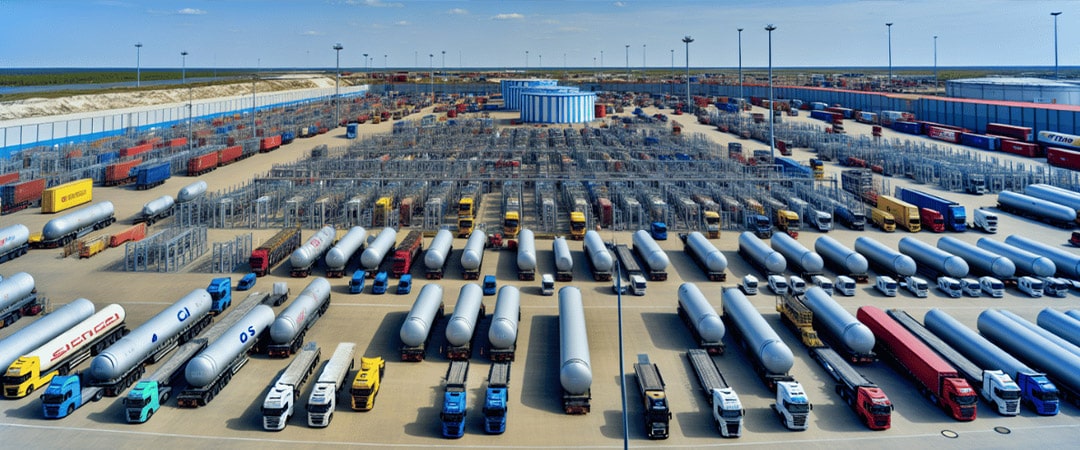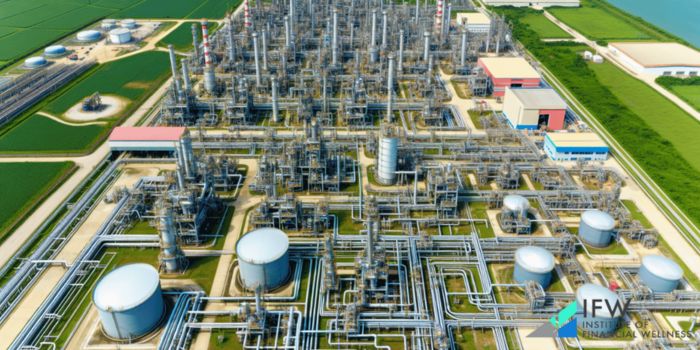“It’s not how much money you make, but how much money you keep, how hard it works for you, and how many generations you keep it for.” – Robert Kiyosaki
When it comes to oil and gas investing, investors seek stability and profit within a volatile sector. In fact, in our retirement webinar, we discuss this at length because we understand how important it is to so many Americans. Get ready for an insightful starting point to help you understand the dynamics of the industry, identify investment avenues, and assess the associated risks. Equipped with this knowledge, you’ll be ready to consider if oil and gas investments align with your financial objectives, from retirement savings to debt reduction, oil and gas investments may be the answer you’ve been looking for!
And don’t forget to check out your Retirement Score for free and understand just how ready you are for retirement.
Key Takeaways
- The oil and gas industry is essential to the global economy and is divided into three sectors—upstream (exploration and extraction), midstream (transportation and storage), and downstream (refining and marketing)—with each playing a critical role in transforming crude oil into usable products.
- Investing in oil and gas involves understanding several factors that affect market prices and profitability, such as global supply and demand dynamics, geopolitical tensions that can disrupt supply, and the influence of technological advancements on exploration and extraction processes.
- There are various investment options within the oil and gas sector, including purchasing company stocks, ETFs and mutual funds, trading oil futures, and direct investment opportunities like mineral rights ownership and Direct Participation Programs (DPPs), each with its own level of risk and potential for returns.
Understanding the Oil and Gas Industry
The oil and gas sector exerts a profound influence on both our daily existence and the functioning of the global economy. Oil and gas play an essential role in everything from fueling our cars to providing heat for our homes, as well as contributing materials for numerous consumer products that define contemporary living standards. Nevertheless, extracting oil and navigating these precious commodities through their lifecycle involves intricate, high-cost processes reliant on advanced technology.
Divided conventionally into three distinct segments—upstream, midstream, and downstream—the industry encompasses a specialized sequence of operations that ensure that oil and gas travel successfully from extraction points all the way to end users. Each segment fulfills a critical function within this continuum of production to distribution [1].
Upstream Sector
In the oil and gas industry, the upstream sector is critical as it encompasses the initial stages of exploration, drilling, and extraction of these vital resources. It’s during this phase that professionals deploy advanced technologies to seek out new reservoirs of oil and gas and appraise their size and potential yield in preparation for the commencement of drilling operations.
With time, innovations like hydraulic fracturing and horizontal drilling have remarkably enhanced the productivity of this sector. These technological strides have allowed for tapping into reserves once thought unreachable or not cost-effective to exploit.
Midstream Sector

Once oil and gas are extracted, they need to be transported and stored, which is where the midstream sector comes into play. It encompasses:
- The construction of pipelines
- Shipping
- Storage of raw materials
- Marketing of oil and natural gas products
This sector is instrumental in ensuring resources flow smoothly from extraction sites to refineries and end-users, which include refiners, marketers, and traders.
Downstream Sector

The downstream sector represents the concluding phase of the value chain in the oil and gas industry. This segment is responsible for transforming crude oil into diverse products, including gasoline, jet fuel, lubricants, and asphalt. It supplies not only transportation and heating fuels, but also plays a pivotal role in producing synthetic materials, pharmaceuticals, as well as goods derived from petrochemicals, which are essential in everyday life.
Key Factors Affecting Oil and Gas Investments

Investing in the oil and gas sector, like any financial venture involving securities, comes with risks that could result in substantial losses, which is why it’s vital to grasp the main elements that can influence your investments within this field because while there exists a considerable opportunity for generating wealth, the associated risks are notably high.
Some of the risks associated with investing are market volatility, interest rate fluctuations, and geopolitical events posing potential challenges to portfolios. To protect your portfolio, diversification emerges as a fundamental strategy, distributing assets across various classes to mitigate the impact of downturns in specific sectors. Inflation risk can be countered by allocating funds to assets historically outpacing inflation, like equities, real estate, and also oil and gas.
Also, you should take into account that the profitability of your investments can be greatly influenced by various factors, including worldwide demand-supply fluctuations, geopolitical strife, and advancements in technology, which all have significant effects on oil prices.
Global Demand and Supply
The law of supply and demand plays a fundamental role in the oil and gas industry. When global oil and gas demand rises and supply declines, oil prices tend to increase, which can present potential investment opportunities. On the contrary, when supply outpaces demand, prices tend to fall [2].
For instance, economic struggles in China can dampen oil demand, significantly impacting global oil markets. Therefore, keeping a close eye on the global dynamics of demand and supply can help you make informed investment decisions.
Geopolitical Tensions
Geopolitical tensions play a significant role in shaping oil prices and investment decisions within the sector. The presence of conflicts, political unrest, and trade disagreements can prompt swift fluctuations in oil prices as fears about supply security escalate. Particularly, discord in regions abundant with oil reserves, such as the Middle East, may exert profound effects on both global supply and the cost of oil.
Supply interruptions provoked by these geopolitical issues are known to induce price volatility that affects investment risks and prospective returns for investors engaging with the oil and gas industry [3].
Technological Advancements
Innovations such as big data analytics, cloud computing, and artificial intelligence have dramatically transformed the oil and gas industry. These technological improvements are streamlining exploration, drilling, and production workflows while also lowering operational expenses and enhancing overall efficiency.
These advancements have opened up new possibilities for tapping into reserves that were once considered unreachable or not cost-effective. This progress is significantly influencing investment valuations in the oil and gas sector.
Investment Options in the Oil and Gas Sector
After acquiring knowledge about the oil and gas industry, including crucial investment determinants, exploring various investment avenues is the next step, and you can take a piece of this sector by investing in oil and gas. One way of doing it is by buying stocks or mutual funds, as well as by trading in oil futures contracts. There are opportunities for direct participation in the oil and gas sector through means such as owning mineral rights or involving oneself in Direct Participation Programs (DPPs).
Company Stocks
The most common way to invest in the oil and gas industry is through the acquisition of company stocks on the stock market. This investment approach grants you a portion of ownership within a firm, along with the chance to benefit from its financial achievements.
Taking EOG Resources Inc. and Vitesse Energy Inc. as examples, these entities deliver substantial returns via tactics including repurchasing their own stocks and dispersing dividends among shareholders, whereas Valero Energy Corp. The emphasis is on implementing share buyback schemes.
Exchange-traded funds (ETFs) and Mutual Funds
Another way can also be done through Exchange-Traded Funds (ETFs) and mutual funds. These instruments allow you to diversify by holding a variety of energy companies’ stocks, including oil stocks, encompassing both traditional and renewable energy sources. Oil investing, in this context, offers a balanced approach to the oil and gas industry.
ETFs, in particular, offer higher liquidity and potentially lower fees compared to mutual funds, making them particularly suitable for individual investors seeking to tap into the energy market.
Oil Futures Contracts
Finally, oil futures contracts are essentially agreements between a buyer and a seller to exchange an agreed-upon number of oil barrels at an established price on a predetermined future date. These instruments allow investors to hedge against potential volatility in oil prices or to engage in speculation, hoping that the price at expiration exceeds their initial purchase cost, thus securing a profit.
However, if you’re not yet an advanced investor, hold your horses! Trading in oil futures is considered an advanced investment approach best suited for seasoned experts or professional investors who possess substantial financial resources and are comfortable with high levels of risk, given the intricacies and dangers involved.
Direct Investment Opportunities in Oil and Gas

Should you seek a greater degree of direct participation within the oil and gas sector, avenues exist, such as acquiring mineral rights or engaging in Direct Participation Programs (DPPs). By pursuing these options, one can directly invest in the exploration and production processes associated with oil and gas. These forms of investments provide possible tax advantages along with cash flows not traded on public markets. Involvement in such investments typically requires a more comprehensive grasp of the oil and gas industry coupled with an increased willingness to accept risk.
Mineral Rights Ownership
Holding mineral rights comes with multiple advantages, namely:
- This is akin to holding real estate property. Rather than possessing the land’s surface, you hold entitlement to the sub-surface minerals like oil and gas.
- These are concrete assets that have the potential to increase in value over an extended period, thus providing an opportunity for appreciation of worth.
These rights present a favorable path toward generating income and enhancing asset value over time.
Direct Participation Programs (DPPs)
Investors can engage in the exploration or production of oil and gas through Direct Participation Programs (DPPs) by making direct investments. Structured frequently as limited partnerships or companies with limited liability, these programs enable investors—commonly known as limited partners—to contribute capital for working interest ownership stakes or shares. A sophisticated understanding of the industry is necessary due to its complexity, and such investment opportunities are available only to accredited investors and Qualified Institutional Buyers (QIBs), reflecting the financial requirements established by the SEC.
Tax Implications and Incentives for Oil and Gas Investments

Taxes are everywhere, and the gas and oil industry is no exception to the rule. Therefore, when considering investments in oil and gas, it’s important to understand the unique tax benefits and implications involved. The U.S. tax code offers specific provisions that allow investors to partially shield their earnings from oil and gas operations from taxes, provided certain criteria are met. Knowledge of these conditions is crucial for maximizing investment returns in this sector.
Tax Deductions
Were you aware that investors in the oil and gas sector can take advantage of significant tax deductions that arise from drilling-related expenses? These costs are categorized as either tangible or intangible drilling costs. The expenditures for actual drilling equipment, referred to as tangible drilling costs, are entirely deductible. They must be depreciated over a period of seven years.
Meanwhile, intangible drilling costs cover expenses such as labor, chemicals, and various other items necessary for well drilling. Typically representing between 60-80% of the total cost to drill a well, these intangible expenses are fully deductible within the year they occur [4].
Tax Credits
To stimulate investment in the oil and gas industry, including new projects such as oil exploration, investors may not only receive deductions but also qualify for tax credits. These fiscal incentives aim to lessen the income tax obligations of investors and offer considerable financial benefits within this sector.
Top Oil and Gas Companies to Consider for Investment
Should you be contemplating an entry into the oil and gas sector, it would be beneficial to examine various companies within this arena. The field offers potential investment opportunities that are highlighted by the successes and endorsements of premier entities in the space. Whether your focus is on comprehensive, integrated oil and gas companies, specialized independent exploration and production firms, or enterprises providing oilfield services, there exists a plethora of choices for consideration.
Integrated Oil and Gas Companies
Integrated oil companies like Exxon-Mobil and Chevron are involved in all segments of the oil and gas value chain, including:
- Upstream operations: exploration and production of oil and gas
- Midstream operations: transportation and storage of oil and gas
- Downstream operations: refining and marketing of oil and gas products
These companies are known for their financial stability and market performance, making them viable investment options.
For example, ExxonMobil’s planned acquisition of Pioneer Natural Resources demonstrates the company’s strategy to secure its position as one of the lowest-cost producers for the foreseeable future.
Independent Exploration and Production Companies
Companies that specialize in exploration and production (E&P) concentrate mainly on the initial stages of oil and gas industry operations, such as searching for natural resources and extracting them. These firms are typically recognized for their groundbreaking methods and substantial profitability.
Take ConocoPhillips as an example: this giant within the independent E&P market boasts a significant global reach along with a firm presence in the highly productive Permian Basin.
Oilfield Services Companies
Companies that service oilfields deliver essential services pivotal to the initiation of oil and gas exploration as well as maintaining ongoing operations at established wells. They supply the necessary equipment for drilling, construct both oil and gas wells, and carry out additional support tasks crucial to the functioning of upstream sector processes.
When you invest in stocks from these companies engaged in gas exploration, you secure a stake in a critical segment of the value chain within the oil and gas industry.
Navigating Oil and Gas Investments: The Institute of Financial Wellness Empowers with Comprehensive Education and Tailored Solutions

The Institute of Financial Wellness (IFW) stands ready to bolster your foray into oil and gas investments with an extensive array of financial education, resources, and services. The IFW delivers:
- Educational content on finance that is both engaging and informative while remaining impartial
- Insights that furnish clarity and bolster confidence, empowering individuals to make well-informed financial choices
- Fully-realized solutions tailored specifically to the unique requirements of each individual
- Continuous advice and assistance designed to secure peak financial prosperity throughout every phase of life.
For those looking to invest their money wisely, The Institute of Financial Wellness is the go-to place to learn how to do it successfully. Contact us for more information!
Full Summary
The oil and gas industry presents a wealth of investment opportunities. From company stocks and exchange-traded funds to direct participation programs and mineral rights ownership, there are numerous avenues to explore. While the industry comes with its share of risks, including market volatility and environmental and regulatory challenges, the potential rewards, including portfolio diversification and tax incentives, are substantial. As always, informed decision-making is key to successful investing, so continue to educate yourself, stay abreast of industry trends, and consult with financial professionals to ensure the best outcomes.
Frequently Asked Questions
Is it good to invest in oil and gas?
The oil and gas sector provides investment opportunities that come with significant tax benefits, including the possibility of deducting 60-80% for expenses related to wells, along with generating income that can be exempt from taxes. It functions as a means to diversify an investment portfolio and protect against inflation [5].
How to invest money in oil and gas?
You can invest in oil and gas through various ways, such as buying stocks in oil and gas companies, ETFs, mutual funds, and private placement. These options offer different levels of risk and return, so it’s important to research and choose carefully.
What are the best oil stocks to buy right now?
Currently, Devon Energy, Equitrans Midstream, Hess, Exxon Mobil, Pioneer Natural Resources, EOG Resources, and Kinder Morgan are regarded as the top oil stocks to contemplate purchasing.
Wall Street endorses these particular stocks due to their impressive track record and prospective for future growth.
What are the cons of investing in oil?
Engaging in oil investment entails considerable hazards, such as the instability of commodity prices, the likelihood of reductions in dividends, and dangers associated with spills or mishaps during extraction. Price fluctuations are profoundly influenced by international supply and demand, alongside technological impacts, rendering it a precarious choice for investors.
What are the main sectors of the oil and gas industry?
In the oil and gas industry, there are three primary sectors: upstream, which focuses on the exploration and extraction of resources. Midstream, responsible for transportation and storage. And downstream, where refining and distribution occur.




